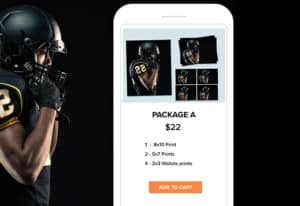How to price your volume photography sessions and products for maximum profit.
September 12th, 2025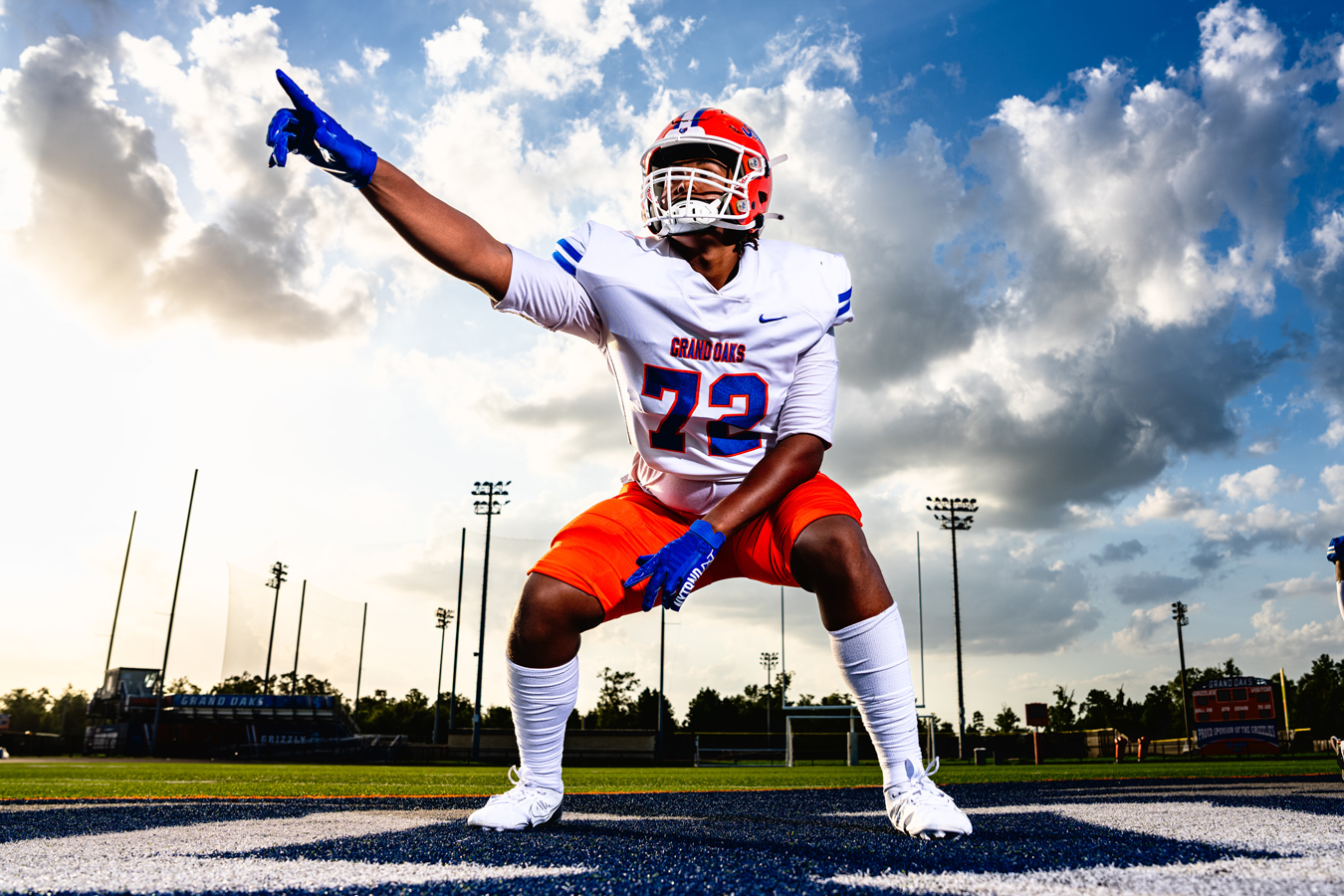
Photo credit: Seth Fontenot Photography
There’s a reason so many photographers are finding themselves drawn into volume work. It just makes business sense if you think about it—youth and high school sports, school pictures, and big community events all share one thing in common: they are predictable, recurring events with a readymade client base. People are going to want those photos, and organizations will want someone to photograph them. When done right, it is a steady stream of income and work that can keep you busy all year long.
But here’s the thing: a lot of photographers jump into this world and immediately stumble over pricing. Maybe you took a peek at what the other local photographer is charging and thought, “Well, I can’t ask for more than that.” Or perhaps you just wing it to get your foot in the door. Either way, like most other specialities in the photography industry, underpricing is the fastest path to major burnout.
This pricing guide is here to keep you out of the burnout zone while you get started in volume photography jobs. We’ll walk through the ins and outs of building a pricing strategy that actually works in the volume space. From choosing your pricing model to building packages and factoring in costs of goods, you’ll come away with a framework that balances profitability with customer-friendly solutions.
And yes, the tools you use to do the job play a considerable role in your success. So grab a coffee, and let’s get into it!
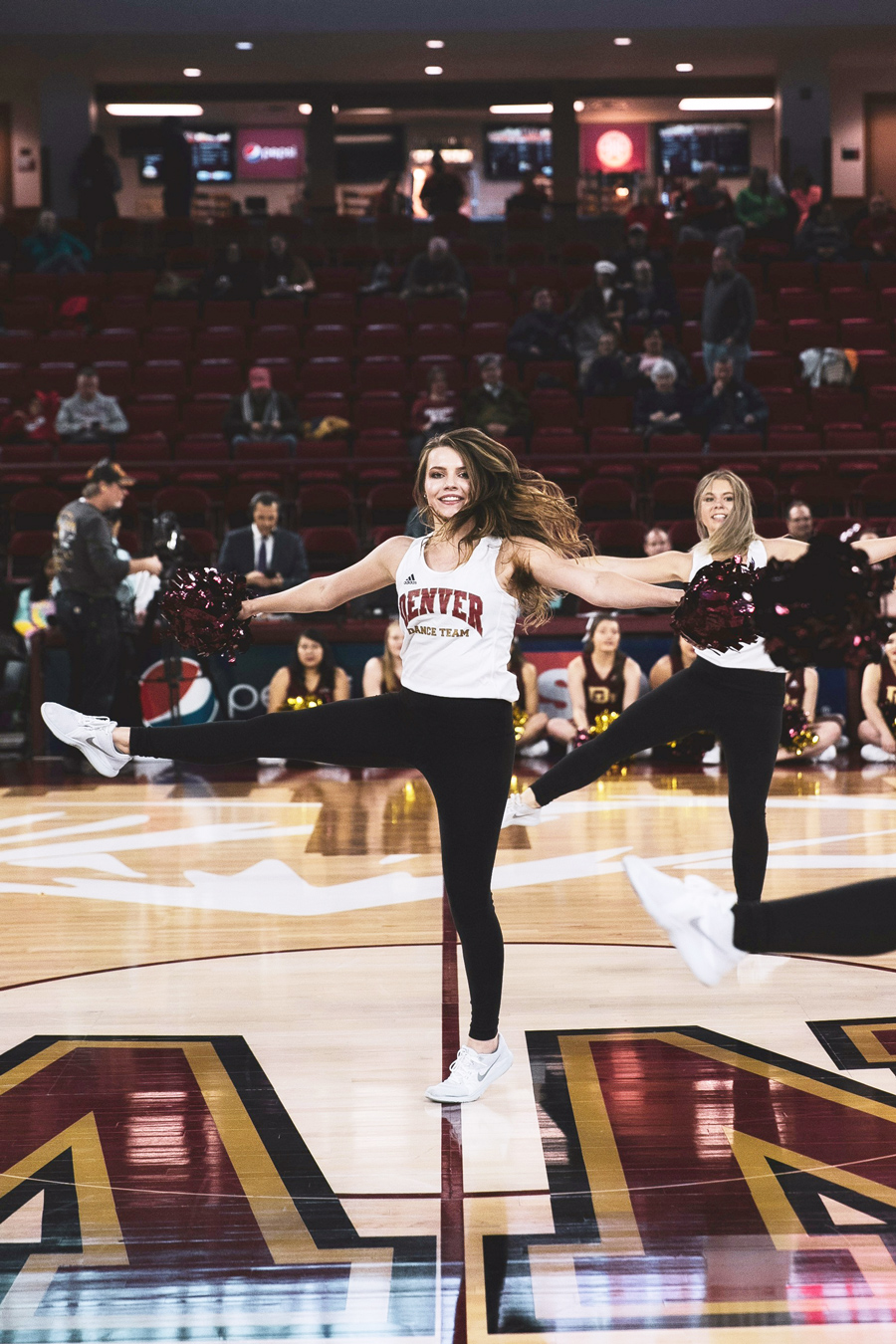
Why pricing matters more in volume photography.
The hard truth? Not every sale in volume will be a huge financial windfall. Each person might only spend $20 to $40. But multiply that across 100-400 (or more!) participants; suddenly, those numbers really add up fast.
The power of small changes at scale:
Even the tiniest of changes in your pricing structure can cause a big incoming profit wave. A little $5 jump in average order value (AOV) doesn’t sound like much, until you realize it’s an extra $2,000 on a job with 400 subjects.
Intentional pricing means you’re not just covering your costs, you’re building in sustainability for your business, and your life! It protects you from pushing through a really tough weekend, only to look back and realize you barely paid yourself a living wage. It will still be hard work, but in the end, your business and personal financial needs will be met.
Choosing your sales model: speculation, paper, or proofing?
Volume photographers typically base their business on one of three sales models. Each has its own unique strengths and weaknesses, depending on your ideal customers and your goals.
Speculation
Also referred to as “Spec” or “Traditional” sales. After the shoot, a photographer will deliver a set of printed proofs to families. Folks then decide what to keep and send back payment for those items.
Pros: Parents experience the emotional impact of seeing the photos, and that first-hand, tangible encounter can really drive up orders.
Cons: It’s a bit risky. High upfront cost of goods, customers might keep prints without payment, and you’re limited to just prints—no chance for a digital upsell.
Best for: Schools, dance studios, cheer teams.
Paper
Before or on picture day, customers or parents receive an order form or envelope, choose a package, and submit payment upfront. This can be done with a check, credit card, or sometimes online in advance.
Pros: Payment is collected before the shoot takes place, so you know exactly how many subjects you will need to photograph. Cash flow is instant.
Cons: Your revenue is limited to just those initial orders, and digital products are more complex to deliver.
Best for: Sports leagues, some schools, and occasionally dance studios.
Proofing
Every subject is photographed, and images are later delivered in an online gallery for customers to review and purchase.
Pros: Increases buyer pool, perfect for upsell opportunities, and makes it easy to deliver digital images or even videos!
Cons: Payment comes later and is spread across the gallery’s lifetime, so cash flow is delayed and/or intermittent.
Best for: All types of volume jobs—sports, schools, and dance—depending on your workflow and sales strategy.

Building profitable packages that people want.
If you’ve ever stared at a blank price list and thought, What do people actually want?” you’re definitely not alone. One of the trickiest parts of volume photography (any type of photography, really) is designing packages that not only look appealing but also ensure they are easily understandable to buyers. The good news? Once you do find that perfect balance, those packages can become the foundation of your incoming revenue.
The most important thing here is to keep things simple but also intentionally strategic. Packages should gently steer customers to spend more without making them feel pressured. Done right, you’ll naturally raise your average order value while also giving families choices that feel like a win-win.
Good–Better–Best bundles: Order value driven pricing.
One of the most reliable pricing frameworks is the Good–Better–Best model. This isn’t just pricing magic, it’s psychology! By presenting three tiers with a clear step-up value, you encourage customers to opt for the middle or top option while still offering a basic package for buyers on a budget.
Here’s a breakdown of what that might look like in a school or sports setting:
Good (Entry-Level): A couple of 5x7s, some wallets, and a single digital download. Affordable, covers the basics, and makes it easy for people to at least grab something.
Better (Most Popular): Multiple prints in different sizes, a couple of specialty items (like a memory mate or magnet), plus a digital image. This is the purchasing sweet spot where most consumers tend to land, as it feels like a solid value.
Best (Premium): All the prints, specialty items, AND an “all digital images” package. This package is priced high, but because we have shown the comparison pricing of the other two packages, it makes the “Better” package look like a bargain deal. Those who go for the top tier are typically your biggest spenders, so don’t be shy about filling it up with premium options.
Pro Tip: Using imaginative and engaging names for packages significantly enhances parent engagement compared to bland, generic titles like “Package One.” (e.g., for Baseball: Grand Slam, Home Run, Triple Play, First Base)
By carefully spacing your price points, you make the decision almost second nature. Most won’t pick the cheapest option, because they realize how much more they get for just a little extra money. That’s how you grow AOV without feeling like a used car salesman.
À la carte vs. packages: What’s right in volume?
While à la carte menus sound consumer-friendly, in practice, they’re not what’s best for your bottom line. A buffet of choices creates decision anxiety, and when a customer hesitates during checkout, they either abandon the shopping cart or spend less than they would have with a well-built package.
That doesn’t mean you should stop offering à la carte completely. Instead, keep the offerings tight….just a handful of items that clients can add onto a package, like:
- Single digital downloads
- Team pictures
- One or two novelty keepsakes (keychains, magnets, buttons)
This way, à la carte acts as an upsell opportunity rather than a distraction from the big sellers–the packages.
Since print pricing is generally fixed by the labs, you can’t really offer big discounts on prints without reducing your profit margins. And because we are more online than ever, digital packages are becoming increasingly popular among clients who want instant access to their images. Digital files are often seen as a better value because they can be shared, printed, and saved indefinitely. Knowing that, your all-digital package should sit at the top of your pricing pyramid as a high-end choice.
Pro Tip: Take some time each year to review your product offers to determine what items are popular and which ones might need to go. Keep an eye out for trending products, like Memory Mates and other photo gifts. Staying on top if these hot items can really make a huge difference in your sales!
Calculating costs and margins (without stress.)
Success in volume photography starts with the numbers. Math isn’t glamorous, but at the end of the day, it is what will set you apart from all other professionals who burn out in the first year or two. You don’t need an MBA or an intimate knowledge of Microsoft Excel (thank goodness!), just a clear handle on what things cost, and how much of a margin you need to stay profitable.
The goal here is simple: build in enough wiggle room so you’re making money on every sale, not just covering your basic expenses.
Labor, lab, and delivery: know your numbers.
Let’s start with your COGS (Cost Of Goods Sold)—these are the costs you can directly control. These aren’t hypothetical numbers; they’re just the cost of doing business. Break them down into buckets like these:
Event coverage costs: Your time on location, second shooters or assistants, travel mileage, gas, lodging and airfare (if needed), and food.
Lab costs: What you pay the lab for prints, memory mates, or other specialty items. Some labs charge the same wholesale price for different print sizes, but that doesn’t mean you should price them equally. Customers see more value in an 8×10 more than a 4×6, and a memory mate or photo gift carries even more perceived worth. Price products accordingly.
Pro Tip: Treat print revenue as bonus income, rather than using it as a discount lever. Build profitability into your packages first, and let print revenue be the gravy on top.
Digital file storage & delivery: Gallery/website hosting, cloud storage costs, physical storage (hard drives, etc), and digital delivery systems. They may feel like an intangible cost, but they start to compound as yoru business grows.
Marketing & automation: Email platforms, SMS tools, or whatever systems you use to promote your work. Even if they’re just a few dollars a month, they’re still part of your cost base.
Once you’ve mapped out those costs, decide on your target profit margin. A solid starting point is aiming for 3–4× your cost on digital packages. Prints will vary more depending on size and perceived value. Instead of just blindly multiplying your lab price, think about what that product really means to your customer. That 8×10 of their child in uniform? It’s worth exponentially more than a 4×6, regardless of lab costs. A memory mate or a collage? This is essentially a custom product…price it as such.
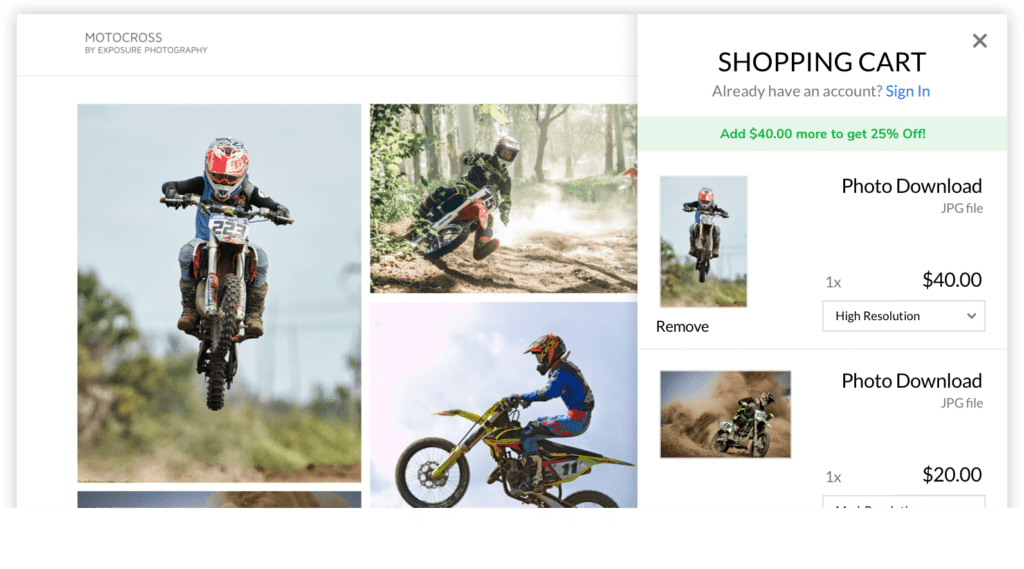
Smart incentives: deadlines, upsells, and early bird offers.
Life is busy, and sometimes, customers need a little nudge. The trick is to make checkout feel like a win for them while quietly boosting your revenue.
Early-bird perks: Think free shipping, an extra print, or a small discount for ordering within the first week.
Deadlines: Without them, people will procrastinate, period. Build urgency by setting a clear gallery close date. Send an email, post a notice within the gallery, and stick to it! Send a few reminders, and you will see orders spike in the last few days.
Coupons: Build your discounts around your package levels so buyers are incentivized to increase their cart total. For example, if your packages are $25, $40, $60, and $75, set coupon thresholds at $30, $45, and $65. Customers are far more likely to upgrade to the next package just to get that dangling discount.
Seasonal promotions: End-of-season wrap-ups, Black Friday/Cyber Monday, or even a year-end “clearance” can spark activity in dormant galleries. For these promotions, consider updating your price list to emphasize gift-friendly items, such as mugs, buttons, or ornaments. These are easy add-ons that customers might not grab during the season, but feel perfect for holiday gifting or stocking stuffers.
With a bit of planning, these incentives can help you enjoy a nice boost in revenue. Extra hustle not required!
Action sports vs. school and sports portraits: product and price list approaches.
Building a price list is not a “one-size-fits-all” endeavor. The kinds of products consumers want, and how much they’re willing to spend, can change drastically depending on the type of event. The key is meeting them where they are, with products that feel undeniable in the moment.
Offering irresistible products for everyone.
Action Sports
Parents love nothing more than the instant satisfaction of being able to share their kid’s game-winning play or highlight reel with friends and family. Digital singles and short video clips will be your biggest sellers. If you can deliver the goods in real time, or shortly after the game, you’ll win those impulse buys hands down.
School Picture Day Portraits
Think convenience. Parents want a simplified price list with tried-and-true staples. Class photos, bag tags, magnets, and overlays featuring the school logo and the current school year.
Sports Team and Individual Portraits
The focus here is on keepsakes that celebrate the season. Memory mates and collages are classics for a reason, and add-on products like buttons and magnets tend to sell off the online shelves. Keep the list small, familiar, and most importantly, affordable.
Pro Tip: Don’t forget senior athlete banners! Customized banners are a high-demand item for graduating seniors. Leaving them off your menu means leaving money on the table.
Quick-start checklist: set profitable prices for your next volume job.
Define your numbers.
Know your anticipated head count (P), your expected Average Order Rate (AOR), and your target Average Order Value (AOV). These three factors will be the guide for all pricing decisions.
Choose your sales model.
Decide between pre-registration, proof-based sales, or a hybrid of the two. Remember that each impacts cash flow, customer experience, and the amount people order.
Build a 3-tier package ladder.
Create Good–Better–Best packages that highlight progression in value. Keep à la carte lean to avoid shopping anxiety and cart abandonment.
Calculate margins:
Do the math on costs you can control: assistants, lab prices, online and physical storage, and delivery. Know your true profit on every order.
Define upsell opportunities and set deadlines.
Map out where you can bring in extra cash (digitals, prints, photo gifts) and when you’ll close galleries to create a sense of urgency.
Automate communication:
Send out those gallery reminder emails and gentle upsell nudges! It’ll help you catch every single sale opportunity.
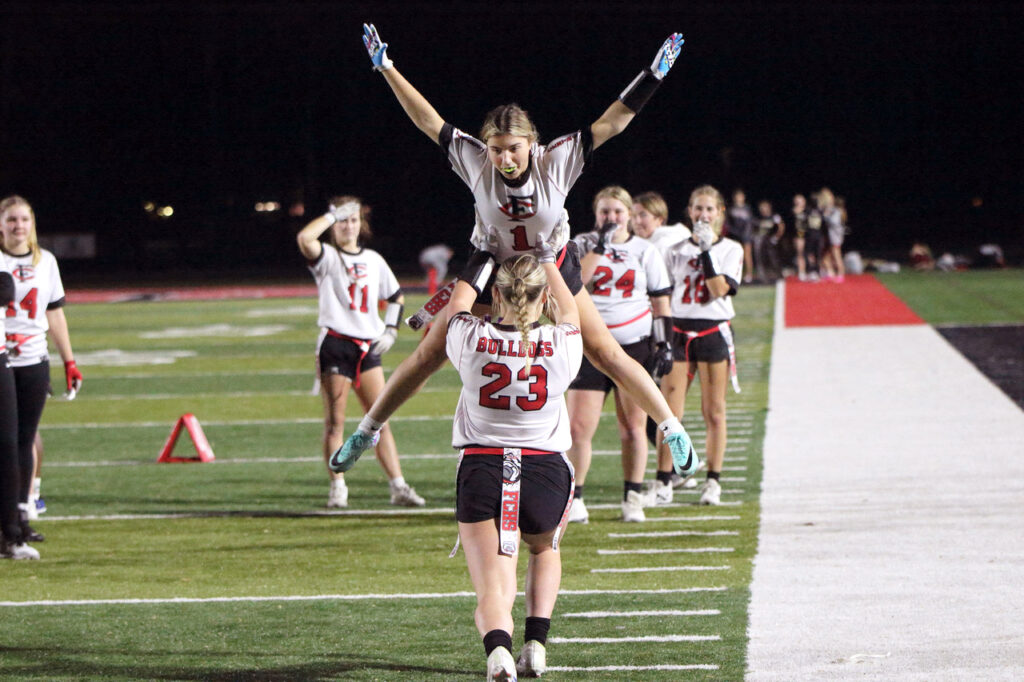
How Zenfolio makes profitable pricing easier:
Bulk Gallery Creation
Quickly create galleries for an entire sports league, school, or event in just a few clicks. Zenfolio’s Desktop Uploader is a perfect tool to streamline this process.
QR Capture
Simplify sorting and matching photos with scannable QR codes. One word—gamechanger.
Upsell Automation
Smart Upsell suggests in-cart promotions automatically. Offer tiered or quantity-based discounts, and free shipping—helping you raise AOV with zero extra effort.
Coming Soon: Face Finder
It can be a bit tricky to spot your child in a sea of kids all wearing the same uniform! Our Face Finder tool has it handled. Customers can instantly find every photo of their child (or themselves)—just by uploading a photo!
Pricing in volume photography isn’t just about revenue formulas on a page. It’s about building a system that keeps you profitable, sane (or mostly sane), in demand, and in the game year after year. And remember, you don’t have to handle it all solo! With a platform like Zenfolio managing your workflow, you can wholeheartedly embrace your passion, grow your business, and have fun doing it!
Turn your images into income.
Pricing is a skill—test, refine, adapt to your market, and then sell your photos online from your own custom store. Set up is quick! Your customers will enjoy a seamless shopping experience.
